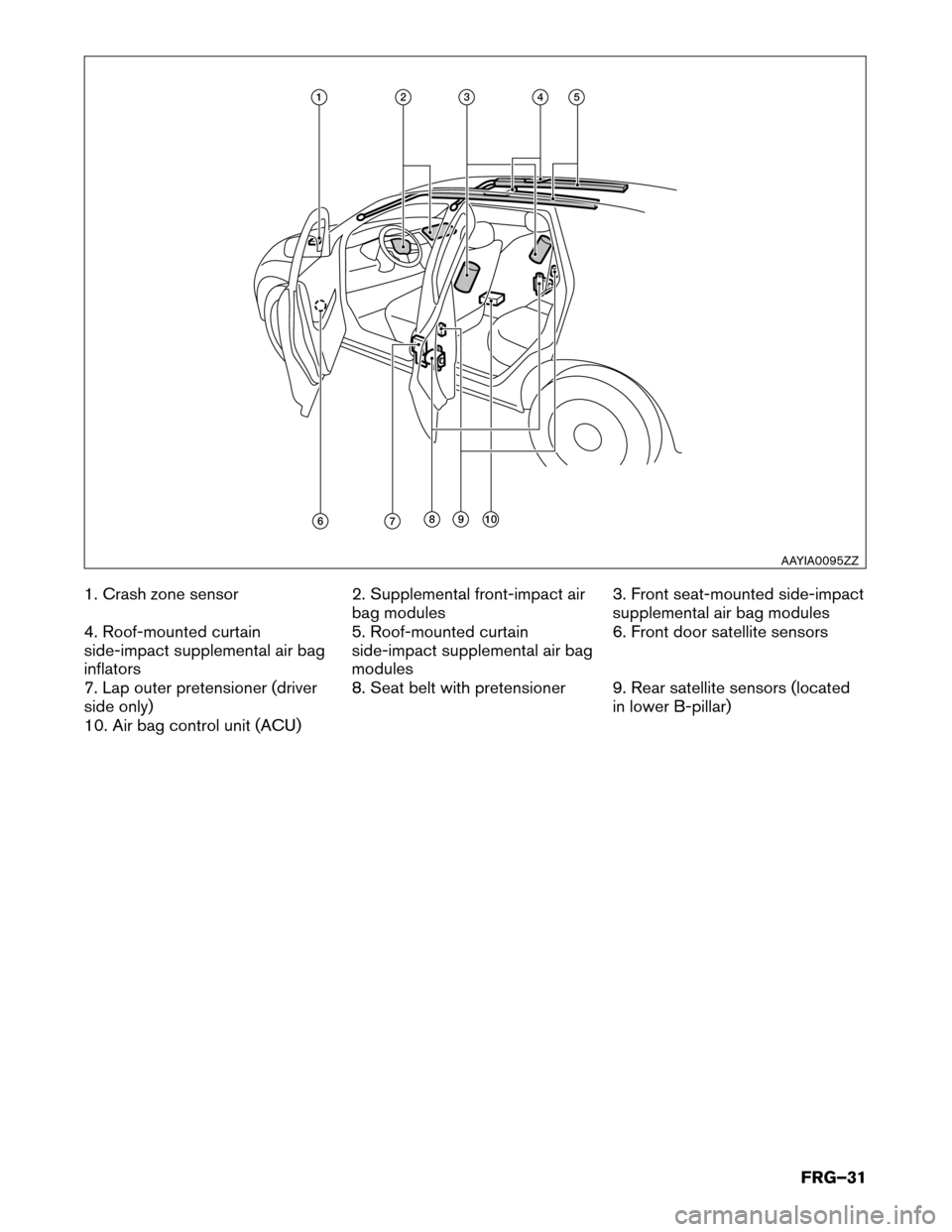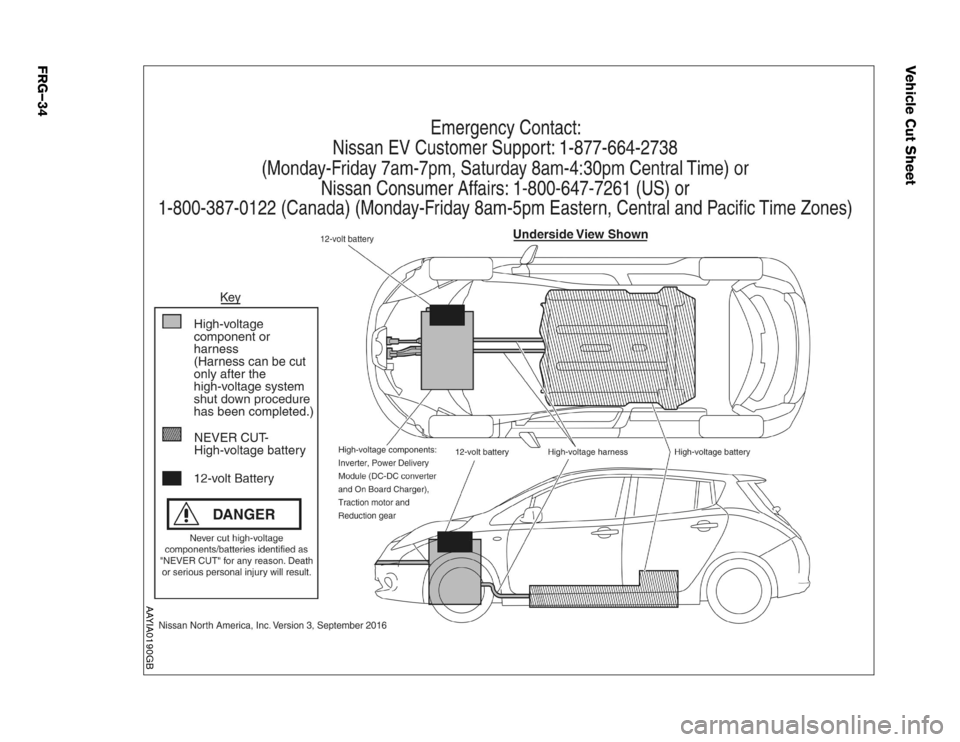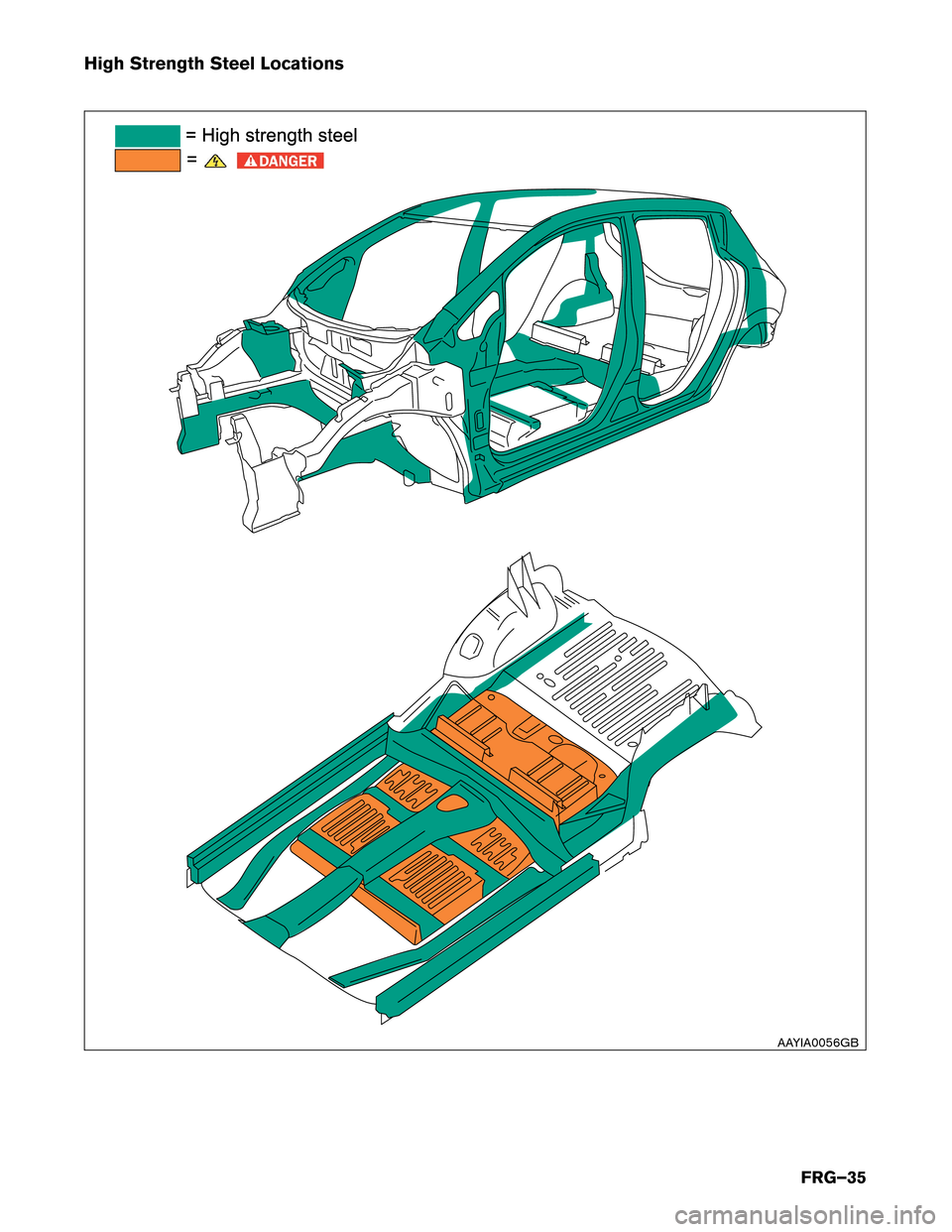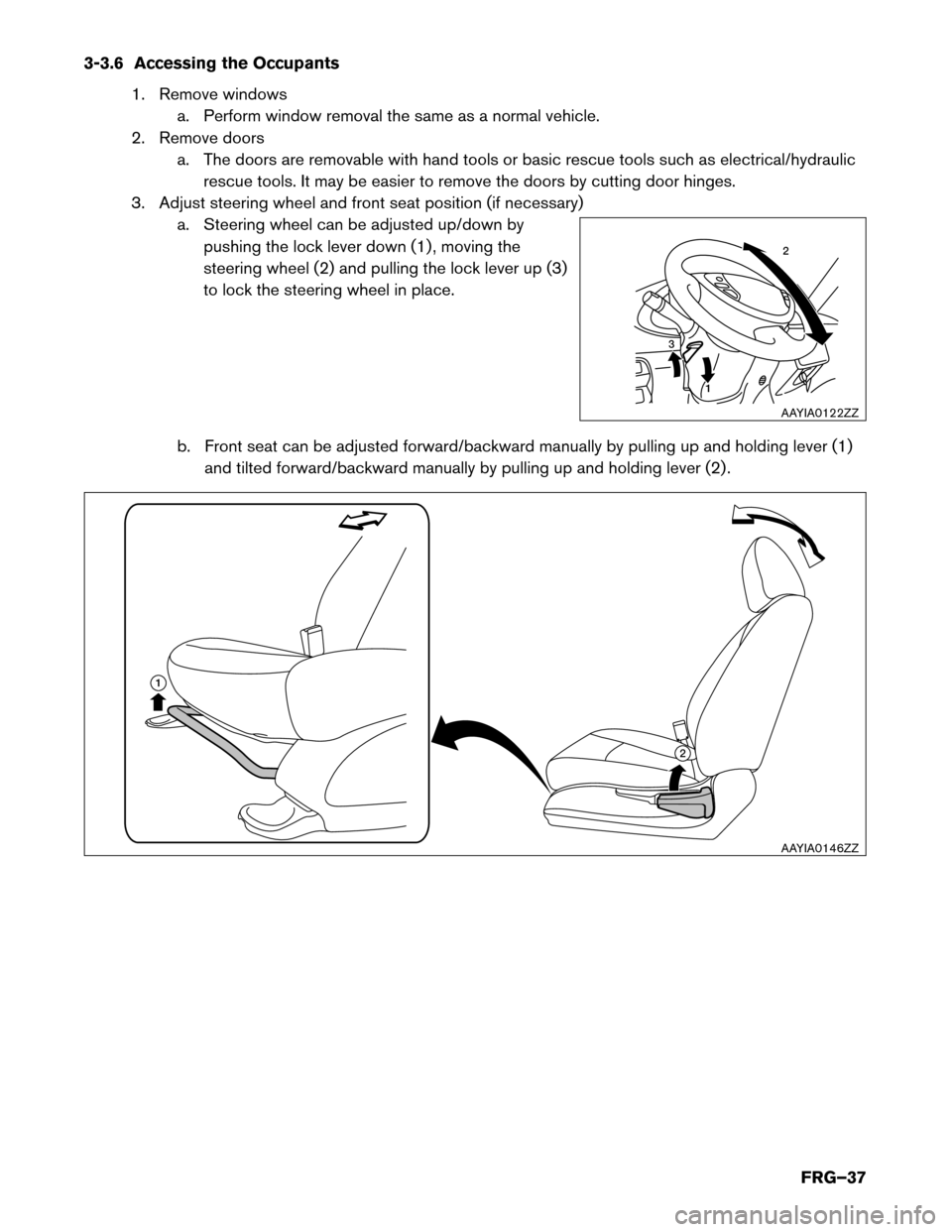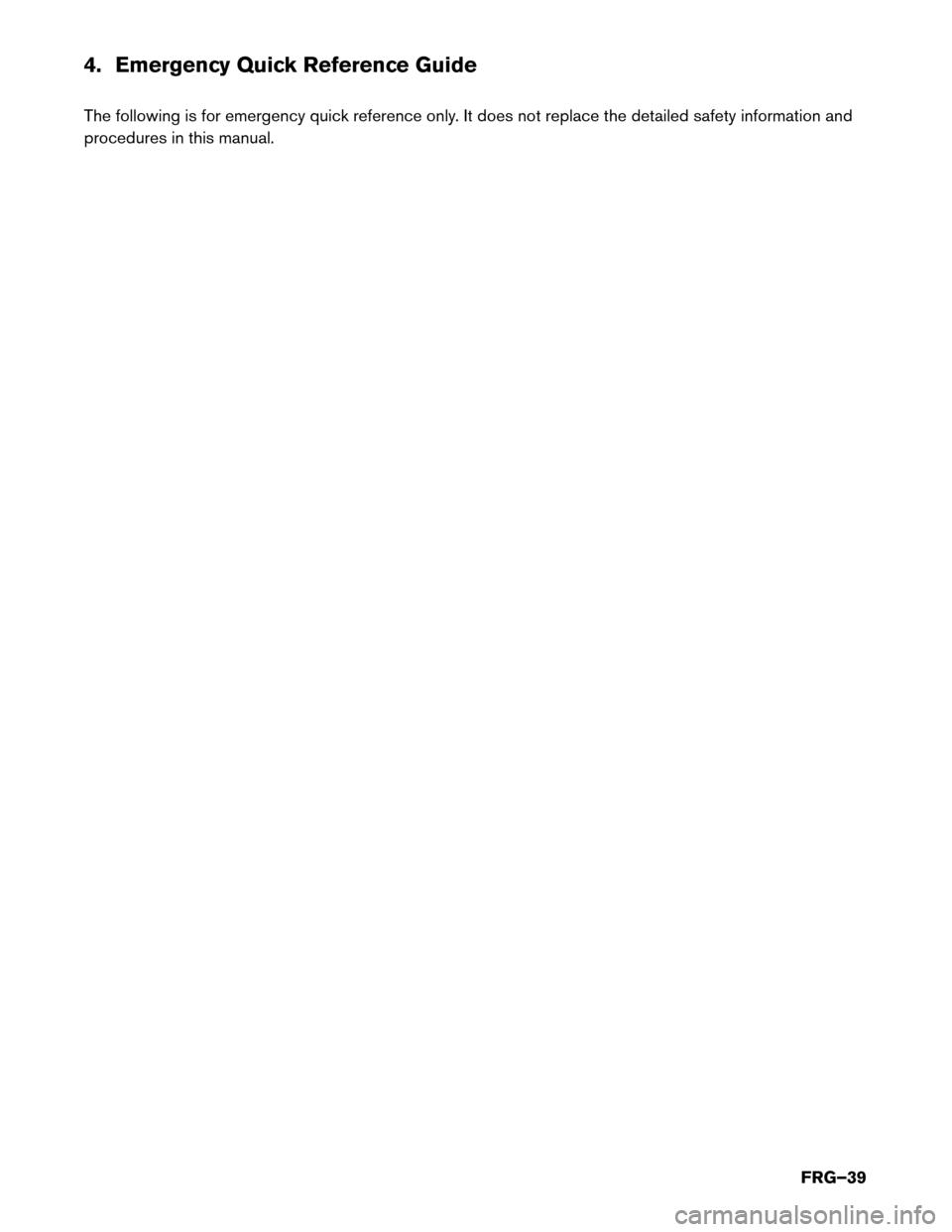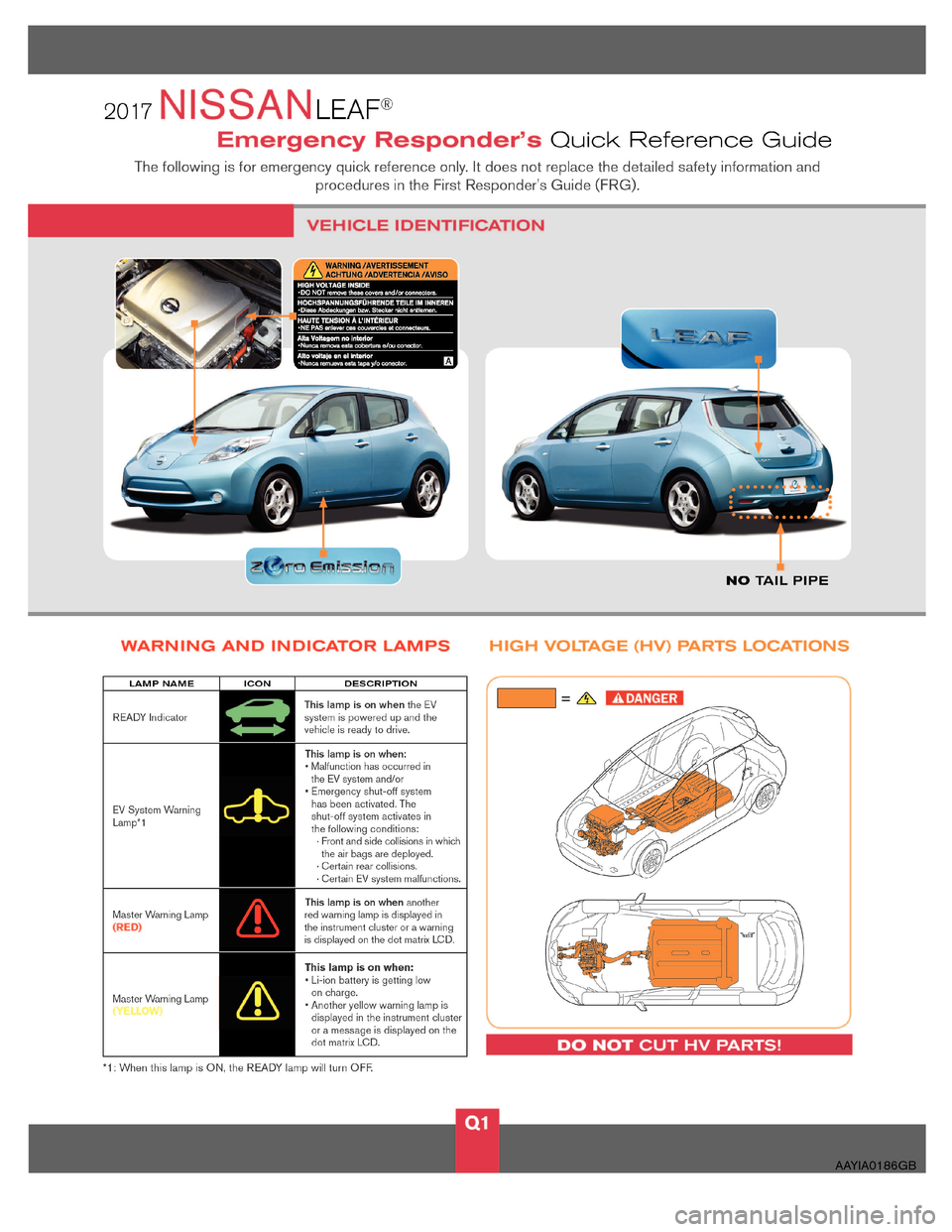NISSAN LEAF 2017 1.G First Responders Guide
LEAF 2017 1.G
NISSAN
NISSAN
https://www.carmanualsonline.info/img/5/530/w960_530-0.png
NISSAN LEAF 2017 1.G First Responders Guide
Trending: gas type, brake light, air condition, roof, instrument panel, boot, headlights
Page 31 of 44
1. Crash zone sensor
2. Supplemental front-impact air
bag modules3. Front seat-mounted side-impact
supplemental air bag modules
4. Roof-mounted curtain
side-impact supplemental air bag
inflators 5. Roof-mounted curtain
side-impact supplemental air bag
modules6. Front door satellite sensors
7. Lap outer pretensioner (driver
side only) 8. Seat belt with pretensioner 9. Rear satellite sensors (located
in lower B-pillar)
10. Air bag control unit (ACU) 11 2 3 4 5
6 7 8 9 10
AAYIA0095ZZ
FRG–31
Page 32 of 44
Late Production Vehicles
AAYIA0193GB
FRG–32
Page 33 of 44
1. Crash zone sensor
2. Supplemental front-impact air
bag modules3. Front seat-mounted side-impact
supplemental air bag modules
4. Roof-mounted curtain
side-impact supplemental air bag
modules 5. Roof-mounted curtain
side-impact supplemental air bag
inflators6. Front door satellite sensors
7. Lap outer pretensioner (driver
side only) 8. Seat belt with pretensioner 9. Rear satellite sensors (located
in lower B-pillar)
10. Air bag control unit (ACU) AAYIA0550ZZ
FRG–33
Page 34 of 44
Vehicle Cut Sheet
AAYIA0190GB
FRG–34
Page 35 of 44
High Strength Steel Locations
== High strength steel
AAYIA0056GBFRG–35
Page 36 of 44
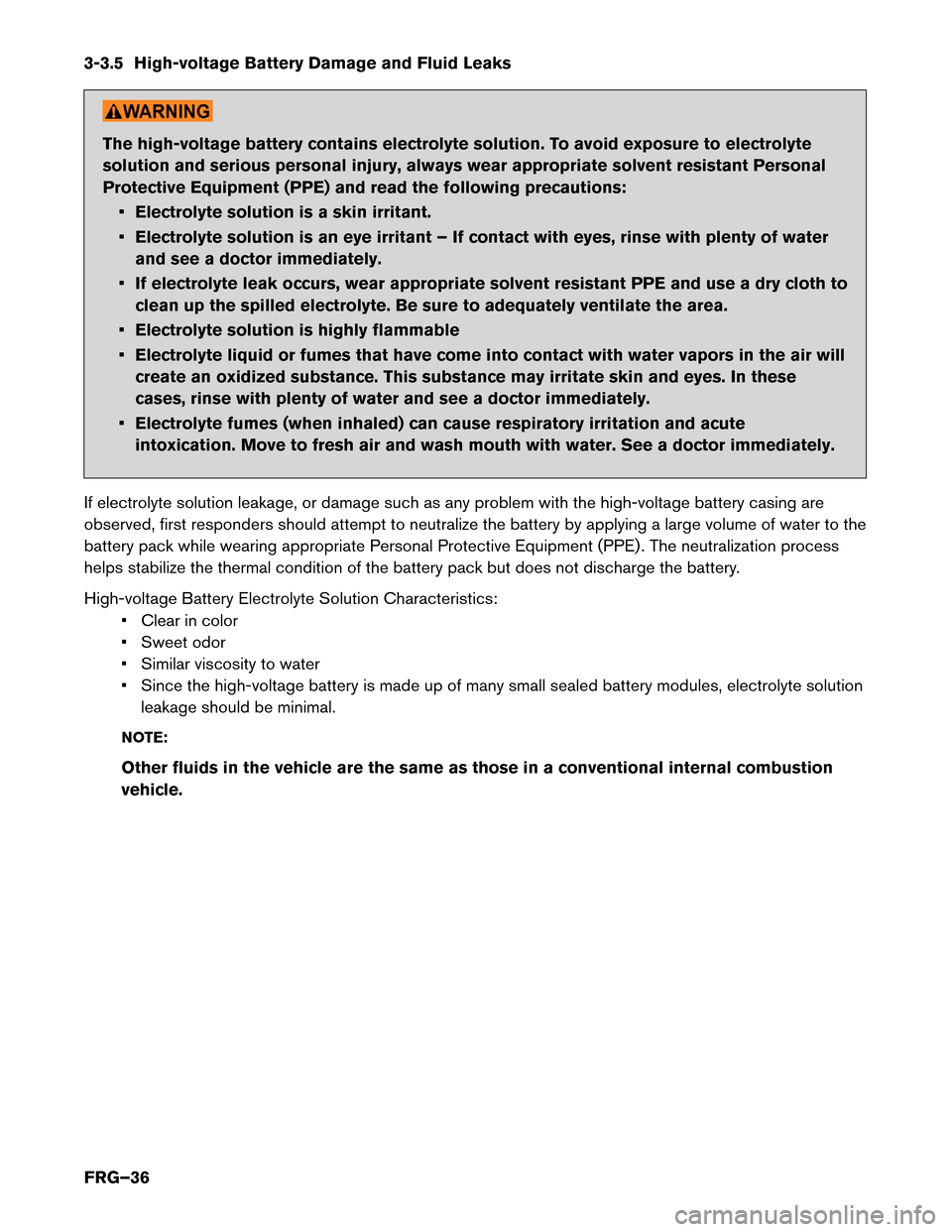
3-3.5 High-voltage Battery Damage and Fluid Leaks
The high-voltage battery contains electrolyte solution. To avoid exposure to electrolyte
solution
and serious personal injury, always wear appropriate solvent resistant Personal
Protective Equipment (PPE) and read the following precautions:
• Electrolyte solution is a skin irritant.
• Electrolyte solution is an eye irritant – If contact with eyes, rinse with plenty of water and see a doctor immediately.
• If electrolyte leak occurs, wear appropriate solvent resistant PPE and use a dry cloth to clean up the spilled electrolyte. Be sure to adequately ventilate the area.
• Electrolyte solution is highly flammable
• Electrolyte liquid or fumes that have come into contact with water vapors in the air will create an oxidized substance. This substance may irritate skin and eyes. In these
cases, rinse with plenty of water and see a doctor immediately.
• Electrolyte fumes (when inhaled) can cause respiratory irritation and acute intoxication. Move to fresh air and wash mouth with water. See a doctor immediately.
If electrolyte solution leakage, or damage such as any problem with the high-voltage battery casing are
observed, first responders should attempt to neutralize the battery by applying a large volume of water to the
battery pack while wearing appropriate Personal Protective Equipment (PPE) . The neutralization process
helps stabilize the thermal condition of the battery pack but does not discharge the battery.
High-voltage Battery Electrolyte Solution Characteristics: • Clear in color
• Sweet odor
• Similar viscosity to water
• Since the high-voltage battery is made up of many small sealed battery modules, electrolyte solutionleakage should be minimal.
NOTE:
Other fluids in the vehicle are the same as those in a conventional internal combustion
vehicle.
FRG–36
Page 37 of 44
3-3.6 Accessing the Occupants
1. Remove windowsa. Perform window removal the same as a normal vehicle.
2. Remove doors a. The doors are removable with hand tools or basic rescue tools such as electrical/hydraulicrescue tools. It may be easier to remove the doors by cutting door hinges.
3. Adjust steering wheel and front seat position (if necessary) a. Steering wheel can be adjusted up/down bypushing the lock lever down (1) , moving the
steering wheel (2) and pulling the lock lever up (3)
to lock the steering wheel in place.
b. Front seat can be adjusted forward/backward manually by pulling up and holding lever (1) and tilted forward/backward manually by pulling up and holding lever (2) . 1
3 2
AAYIA0122ZZ 21
AAYIA0146ZZ
FRG–37
Page 38 of 44
4. Remove front seat head restraint (if necessary) .
The front seat head restraint can be removed by
pressing the lock knob and pulling it up.
5. Unfasten the seat belt. Seat belt can be unfastened by pressing the release
button. If seat belt cannot be unfastened, cut it with
a belt cutter.
3-4 Storing The Vehicle
For vehicle storage information, refer to Roadside Assistance Guide or Dismantling Guide located at
www.nissanusa.com orwww.nissan-techinfo.com. AAYIA0079ZZ
AAYIA0080ZZ
FRG–38
Page 39 of 44
4. Emergency Quick Reference Guide
The
following is for emergency quick reference only. It does not replace the detailed safety information and
procedures in this manual.
FRG–39
Page 40 of 44
Trending: wheel, ignition, oil, brake light, audio, fuses, roof
